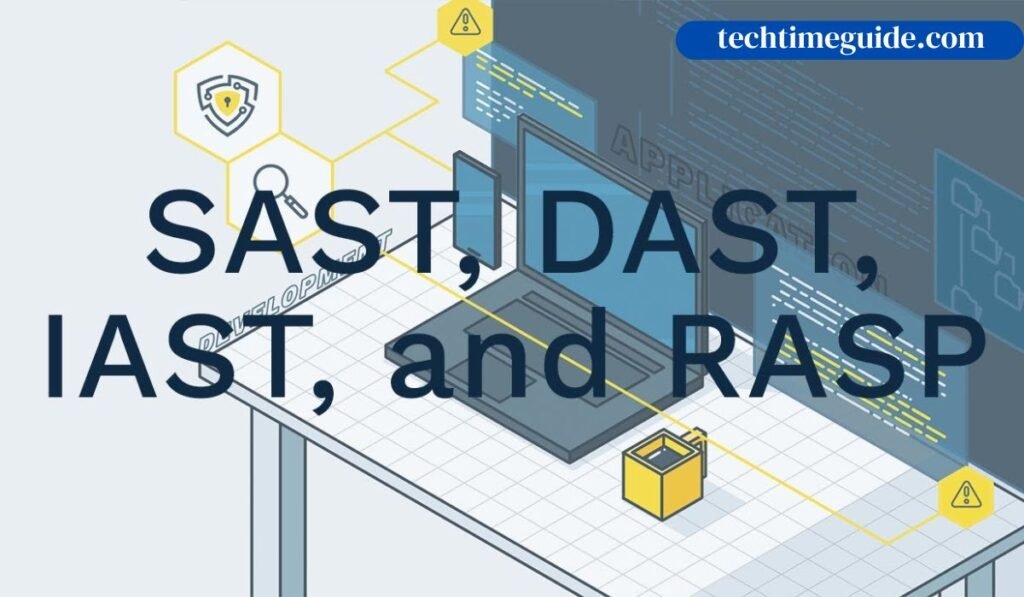Demystifying SAST, DAST, IAST, and RASP: Understanding Application Security Testing Techniques
Introduction In today’s rapidly evolving digital landscape, securing applications is no longer optional; it’s a necessity. With software vulnerabilities continuing to be exploited, developers and organizations alike need to adopt robust security testing practices. But with so many security testing methodologies available, like Demystifying SAST, DAST, IAST, and RASP, it can be confusing to understand which one fits best for your project. Let’s dive into each of these approaches and break down what they are, how they work, and when you should use them to safeguard your applications. What is SAST? (Static Application Security Testing) SAST is a testing method that analyzes an application’s source code, bytecode, or binary code for vulnerabilities without executing the application. Essentially, it’s a white-box testing technique that examines the code structure to detect flaws early in the development cycle. How SAST Works SAST tools scan the code while it’s being written or before deployment, providing developers with insights into security issues like SQL injections, cross-site scripting (XSS), and buffer overflows. By highlighting vulnerabilities at the code level, SAST helps to “shift left” security in the development lifecycle. Benefits of SAST Limitations of SAST What is DAST? (Dynamic Application Security Testing) Unlike SAST, DAST is a black-box testing approach that involves analyzing the application in its running state. Instead of reviewing the code, DAST simulates attacks on the application from the outside, just as a hacker would. How DAST Works DAST tools perform automated scans to probe the running application for security weaknesses, such as misconfigurations, authentication issues, and vulnerabilities that emerge when the app interacts with different systems. Advantages of DAST Drawbacks of DAST What is IAST? (Interactive Application Security Testing) IAST combines the strengths of both SAST and DAST by running in real-time while the application is executing. It provides interactive, in-depth security analysis by analyzing code and behavior simultaneously. How IAST Works IAST tools work by embedding agents into the application. These agents monitor the application’s operations and report on vulnerabilities based on how the code interacts with other components, user inputs, and its environment. Benefits of IAST Challenges in Using IAST What is RASP? (Runtime Application Self-Protection) RASP is an innovative approach that allows applications to defend themselves during runtime. RASP monitors the application for suspicious behavior and can block attacks in real time without human intervention. How RASP Works RASP tools sit within the application or its runtime environment, automatically detecting and responding to threats as they happen. This includes blocking malicious inputs, halting suspicious user sessions, or neutralizing vulnerabilities that are exploited. Key Advantages of RASP Limitations of RASP Comparing SAST, DAST, IAST, and RASP Each of these techniques serves a unique purpose, and they’re often most effective when used together. Here’s a quick comparison: How SAST, DAST, IAST, and RASP Fit Into DevSecOps As organizations shift toward DevSecOps, integrating security testing into CI/CD pipelines becomes crucial. Each method can be automated: Why Security Testing is Vital for Modern Applications With threats like SQL Injection, Cross-Site Scripting, and buffer overflows still rampant, security testing must be baked into the development process. SAST, DAST, IAST, and RASP each play a role in reducing vulnerabilities and ensuring that applications remain secure in the face of increasingly sophisticated attacks. How to Choose the Right Security Testing Approach for Your Project When choosing between SAST, DAST, IAST, and RASP, consider: Best Practices for Implementing SAST, DAST, IAST, and RASP Real-World Examples of SAST, DAST, IAST, and RASP Tools The Future of Application Security Testing With AI and machine learning, we’re likely to see more adaptive and predictive security tools that evolve alongside threats, making the combination of Demystifying SAST, DAST, IAST, and RASP even more indispensable. Common Misconceptions About SAST, DAST, IAST, and RASP Some believe that one tool can replace the other or that implementing them is too costly. However, using them together maximizes security and can be more cost-effective than dealing with breaches post-deployment. Conclusion Application security is a critical concern, and understanding the different tools at your disposal is key. Demystifying SAST, DAST, IAST, and RASP each bring unique strengths to the table, and when used in tandem, they create a formidable defense strategy that protects applications from code to runtime. FAQs Also Read More: How to Resolve Deleted Cluster Node Still Showing in Proxmox
